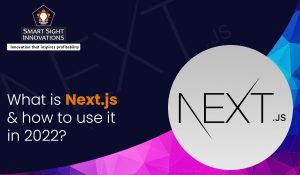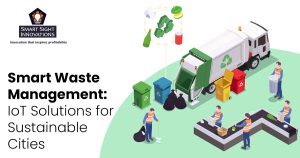 Synopsis: Web technologies are growing and changing almost every month. Making any decision requires knowing the pros and cons of each option in advance, and making a good choice with confidence is becoming more and more challenging.
Synopsis: Web technologies are growing and changing almost every month. Making any decision requires knowing the pros and cons of each option in advance, and making a good choice with confidence is becoming more and more challenging.
Knowing about Next.js, a React-driven JavaScript framework helps you to create a really easy and customized user experience. The right information can get you the popular solutions for building interactive web applications, both small and large.
Next.js is a React-based framework with the power to develop a web application for different platforms like Windows, Linux and Mac. If you have little experience in React, and looking forward to knowing more in 2022, then knowledge about the Next.js framework is essential.
What is Next.js?
Next.js is an excellent tool for creating web applications and is popular for server-side rendering. It is based on react, webpack and babel. Developers skilled in HTML, CSS, JavaScript and React languages can easily learn and switch to Next.js. Its main features include:
- Compatibility with the ecosystem, especially with JavaScript, Node and React.
- Hot code reloading which automatically reloads the application when changes to the code are saved.
- Automatic code segmentation feature, where each import in the code is bundled and served with each page. It means that redundant codes are never loaded on the page.
- Style-JSX that allows you to write CSS directly inside JavaScript code.
- Server-side rendering that allows easy rendering of react/React components on the server before sending HTML to the client.
Next.js framework
Working on a modern JavaScript application with React is hassle-free as long as there are no issues with rendering the content on the client-side. Server rendering, or static pre-rendering solves these issues. But how does this framework work?
Sometimes websites and apps take longer than a millisecond to load, and users can become irritated if expectations are not met. Next.js is comprehensive and a good choice for a variety of reasons related to speed and performance. Its main features provide:
- Superb performance
- Rich user experience
- Rapid feature development
Rendering in Next.js
Rendering allows the user to convert code written in React into an HTML UI representation. This can be done on the client-end and server-end. It can happen before requests are made at build time or after each request is made at runtime. It involves the following:
Server-side rendering (SSR)
It is the capability of an application that allows the developer to convert HTML files on the server into a fully rendered HTML client page. The advantage of SSR is that it allows the developer to use the same code to provide a faster user experience using custom data.
Taking advantage of the server’s reliable internet connection, SSR can receive data and pre-populate web pages with custom content. For example, if the developer has an index.html file that needs to be delivered to the client, the developer has metadata, mostly homepage metadata.
Server-side rendering is better for SEO than client-side rendering. Because server-side rendering can speed up page load times, which improves the user experience, and can help your site rank better in Google search results.
Pre-rendering
It works as a viable solution for the mandated servers used for universal apps that are a deterrent to a small application. In other words, pre-rendering is the generation of HTML in advance on the server, instead of being done by JavaScript on the user’s device.
Some content on another page or site may be pre-rendered when a user navigates a web page in preparation for a user visiting it next. As some elements of the page were rendered already, the new page loads faster.
For example, if allowed by the browser, the first web page in Google’s search results is always pre-rendered. Google assumes that the top result will be clicked, so it requests the browser render that page.
Deferred rendering (ISR)
In this framework, deferred rendering is referred to as incremental static regeneration (ISR), first implemented in version 9.4. It is similar to pre-rendering, only the requested page is not rendered during the initial build. It is presented when a user requests it.
Users will see a pre-rendered version of the page until a new build occurs or a specified cache timeout expires. The purpose of ISR is to reduce the time it takes to build a large site by allowing the developer to defer the creation of low-traffic pages.
Plus, it can also render pages based on user-generated content on a case-by-case basis.
When to use Next .js
You can choose Next.jsnext.js to build all kinds of websites with different goals and objectives. These websites are very useful when they are:
- Large e-commerce website
- Large multi-user websites
- Client-side rendered applications (SPA/MPA)
- Web portals
- B2B and SaaS websites
- Finance websites
Next.js allows a user to build multiple digital products and interfaces. Some successful Next.js examples include:
SaaS products
This is one of the most relevant business delivery models. SaaS products are internet software that is hosted by a central provider and allows access to all users.
It allows users to connect with and use cloud-based apps over the internet. It provides a complete software solution that you buy on a pay-as-you-go basis from a cloud service provider.
Examples of SaaS products are BigCommerce. Google Workspace, Salesforce. Dropbox and Canva.
Retail or e-commerce websites
A retail or e-commerce website allows individuals to buy and sell physical goods, services, and digital products online rather than in an actual store.
A business can handle orders, receive payments, manage shipping and logistics, and provide customer service through an e-commerce website development. Examples are Amazon, Alibaba, Flipkart, Snapdeal and Myntra.
MVP (Minimum Viable Product)
MVP is a product version that includes enough features to be used by the initial customer and adds validation to the product idea throughout the product development cycle.
In other words, an MVP can assist the product team in transforming and integrating products as a form of initial user feedback in the software industry. Examples of MVP are Amazon, Foursquare and Adwords Express.
Web portal
A portal is a web-based platform that aggregates data from multiple sources into a single user interface and displays it to users in the manner most appropriate to their needs.
Simple web portals have evolved into systems that enable full-time digital customer experience efforts.
Examples are Allianz, a wealth management and insurance portal, Carrefour Bank, a financial customer self-service portal, MedImpact, a benefit program portal and Domino’s Pizza.
Single web page
A single-page website is known as a one-page website, it contains only one HTML page. There are no additional pages, such as the Contact Us, About, or Features page.
A single-page application (SPA) is a website that dynamically rewrites the current page instead of reloading it. It is an ideal choice for a website with constant interaction between website and visitor. Examples are Gmail, Google Maps, Airbnb, Netflix, Pinterest and PayPal.
Static websites
A static website, also known as a flat or static page, is displayed exactly as it is stored in a computer browser. It is made up of HTML-coded web pages placed on a web server. It does not change and remains the same or constant for all site visitors.
Examples are resume websites, portfolio websites, brochure websites, one-time landing pages and other informational or read-only sites.
Jamstack websites
Next.js is an increasingly popular solution for building Jamstack sites using JavaScript and React. It is emerging as the new standard architecture in the web context. It is a modern web development architecture derived from Markup (JAM), JavaScript and APIs.
Jamstack is a different technology for building apps and websites. It has 3 components, namely, JavaScript, API and Markup. This makes the static site more meaningful.
Examples are Louis Vuitton, Leonardo DiCaprio Foundation and more.
Blog
A blog is a reverse chronological online diary. But it is a regularly updated web page or informational website that displays the content in reverse chronological order. The most recent and latest posts appear at the top.
It is a platform where an author or a group of writers can express their views on a specific topic.
Examples are Tumblr, Weebly, Joomla, Blogspot, Typepad, Ghost, Squarespace and Hashnode.
All things considered
Whether or not to use the Next.jsnext.js framework for your next app or website depends on what you want to achieve. You can harness the benefits of modern web technology like Next.jsnext.js to make your online business more efficient.
Next.js is great when you want to have a static website with lots of updates. This will help you improve your page speed and be fully interactive.
Hire the right team providing all the tools and expertise needed to plan and execute a profitable project.














